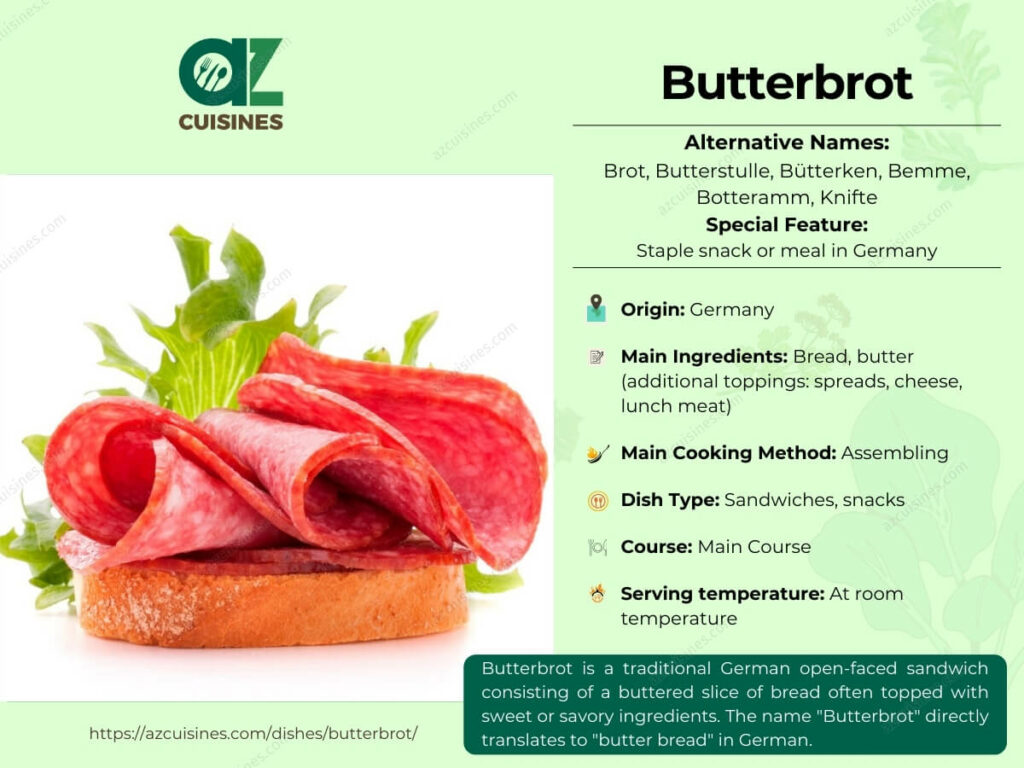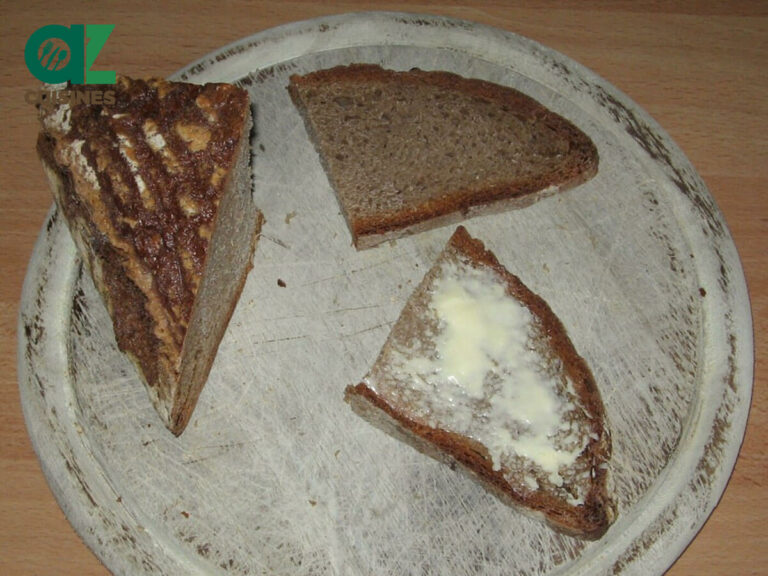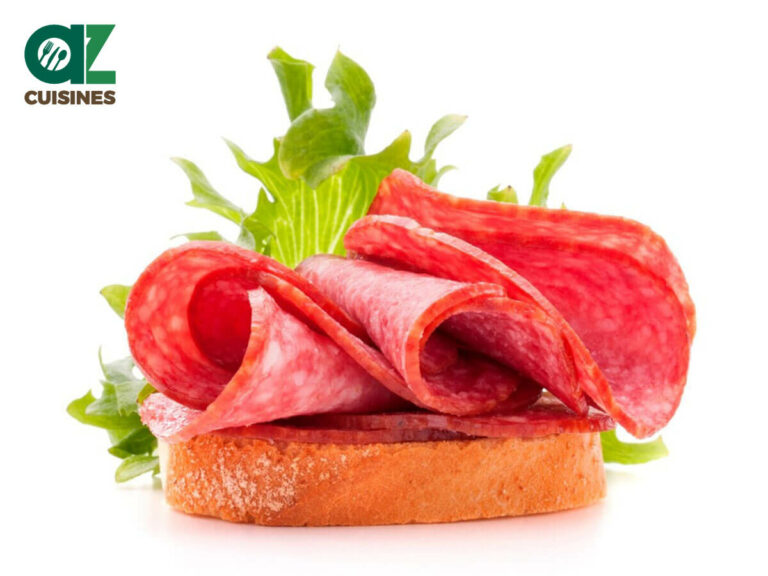#29 in Kazakhstan
Butterbrot: Basic Information
Pronunciation
Alternative Name(s)
Dish Type
Course
Mealtime
Popular Variations
Butterbrot: Ingredients and Preparation
Main Ingredients
Main Cooking Method
Preparation Process
Butterbrot: A Deep Dive
Cultural Significance
Taste
Texture
Aroma
Color
Serving Style
Serving Temperature
Accompaniment
Occasions
Seasons
Special Diets
Calories
Popularity
- Germany
- Russia
- Ukraine
- Kazakhstan
- Georgia
- Belarus
- Azerbaijan
- Lithuania
- Austria
Popular Similar Dishes
- Smørrebrød
- Bruschetta
- Tartine
- Crostini
- Canapé
Popular Dining Area
Butterbrot (pronounced ˈbʊtərˌbroːt]) refers to a slice of bread spread with butter in German cuisine. Plus, the term “butterbrot” literally means “butter bread” in German.
Butterbrot can be considered a type of sandwich and is mostly served open-faced.
This sandwich can go with different toppings like spreads, cheese, lunch meat, with the base always including two key components: a slice of bread and butter.
Butterbrot is a traditional German food or meal, often consumed for breakfast, boxed lunch, dinner, or as a snack.
The Butterbrot ingredients are typically sweet for breakfast, such as jam honey, marmalade, or spreads.
In contrast, savory components, like cold meat, cheese/cream cheese, smoked salmon, are ideal for other meals.
In fact, the term “butterbrot” is influenced by different dialects. Moreover, it is not similar to a regular sandwich.
There are also some pros and cons of consuming Butterbrot that you need to know. Keep reading to know more about this German culinary delight.
Key Points
Butterbrot Images
How Have Different Dialects Influence the Term “Butterbrot”?
The term “butterbrot” in German has various names with different dialects, such as Brot, Butterstulle, Bütterken, Bemme, Botteramm, or Knifte.
Butterbrot’s popularity also spread to other countries, especially Russia, with another term. The Russian language borrowed “buterbrod” from German.
This Russian variant, signifying any bread with toppings, influenced several languages across Eastern Europe and the former Soviet Union, including Ukraine, Kazakhstan, Georgia, Belarus, Azerbaijan, and Lithuania.
After the fall of the Soviet Union, buterbrod continued to be a regular part of daily life in post-Soviet states.
In Austria, the term “butterbrot” strictly refers to a slice of bread with butter. And it’s named after that specific topping if any topping is added.
For example, Käsebrot for “cheese bread” or Wurstbrot for “sausage bread”. And with different ingredients, there are certain ways to distinguish a Butterbrot from a regular sandwich.
Pros and Cons Of Eating Butterbrot
In general, Butterbrot is a delicious dish with different good sides, but it also has some drawbacks that you should notice, which are shown in the table below.
Pros
Cons
Keep reading to find out the dissimilarities between a butterbrot and a sandwich.
What Are The Differences Between a Butterbrot and a Sandwich?
The key differences between a Butterbrot and a sandwich are their origin and ingredients.
A Butterbrot hails from German-speaking countries, while a sandwich originates in England.
Moreover, a Butterbrot usually uses typical German bread types, which are firmer, have a fullertaste, and often have a crispy crust compared to softer English sandwich slices.
While a Butterbrot commonly has simpler components, a sandwich can have multiple layers of ingredients, like meats, cheeses, vegetables, and condiments.
FYI, in German-speaking countries, the Butterbrot and the British-style sandwich are differentiated by using the English word “sandwich” for the latter.
Finally, check out some related questions about this open-faced sandwich to comprehend it.










Adam Sam
Senior Food and Drink Editor
Expertise
Food Writer & Recipe Developer, Recipe Tester, Bartender, Cooking-video Maker, Editor In Chief
Education
Adam Sam, an experienced food writer and recipe developer, is passionate about blending diverse culinary traditions, national dishes, and innovative beverages, showcasing his proficiency in both traditional and modern recipe testing.
As the Editor-in-Chief, he elevates culinary content from street food to fine dining, focusing on Western cuisine and types of drinks at azcuisines.com, and is professional in creating engaging cooking videos that simplify complex dishes and ingredients.
His passion for food is evident in his writing, where he uniquely merges various cultures, traditions, and contemporary trends, skillfully combining classic recipes with modern cooking methods.